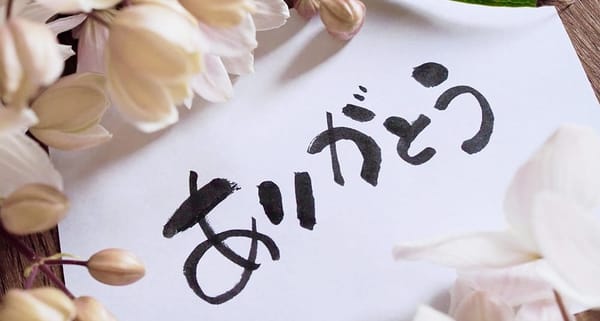The History of Indirect Communication in Japan: A Strategy, Not a Quirk
From samurai-era danger to modern corporate codes—why Japanese speech avoids saying too much.

If you're living and working in Japan, one of the earliest culture shock you might experience is Indirect vs Direct communication. Many of us who come from Western sensibilities who are so used to people around us telling us their feelings and thoughts upfront, that we may struggle hard to understand what our Japanese counterparts are trying to tell us, which begs the question:
Why do Japanese people speak indirectly?
Most explanations point to surface-level values like wa (harmony) or a sweeping statement like “all Japanese people are shy and reserved.” But as with all cultural traits, the truth runs deeper. Japanese indirect communication didn’t arise from a love of ambiguity for its own sake — it was built over centuries as a survival strategy in a tightly hierarchical and often dangerous society.
To understand this fully, we need to leave our prejudice aside and step into Japan’s actual historical context to explore how indirectness became not just a habit, but a form of self-protection.
1. Feudal Survival Culture (Kamakura to Edo Period)
Japan’s long feudal era (roughly 12th to 19th century, i.e. around 900 years ago) was governed by strict hierarchies under samurai rule. Communication was not just social, it was a matter of life and death.
- Lords (daimyō) and samurai retainers lived under constant surveillance and political tension. A misinterpreted word could mark you as disloyal or threatening.
- Expressing raw disagreement to someone above you could be seen as insubordination. A polite vagueness became a skill — not just etiquette, but a survival tool.
In this context, speaking indirectly was self-protection. Ambiguity gave people plausible deniability. If something went wrong, you could say:
“I never said that directly.”
This culture of encoded, deferential speech hardened over time. Even today’s keigo (honorific language) evolved to reflect those rigid power dynamics.
Indirect speech was not always about being nice. It was about plausible deniability, and avoiding punishment.
2. Tokugawa Period: Peace, Surveillance, and Stagnation (1603–1868)
Life Under Surveillance
The Tokugawa government also implemented neighborhood-level policing systems such as the gonin-gumi (five-household groups), where residents were collectively responsible for reporting or punishing suspicious behavior. Everyone watched everyone.
- The Tokugawa shogunate enforced a strict caste system. Peasants, merchants, samurai — everyone had their place. Speaking too freely could attract suspicion.
- The government instituted systems of mutual surveillance (五人組, gonin-gumi). Communities were expected to police themselves.
- There was a deep sense of “not standing out,” and social conformity became essential. Being blunt could alienate you — or get you reported.
This produced a culture of internal self-monitoring — not just in behavior, but in speech. People learned not to express views too openly, to avoid sticking out, and to say things that could be interpreted multiple ways. Direct speech could be recorded, remembered, and used against you.
So indirectness wasn’t just interpersonal. It was systemic. A social operating system built on low-risk expression.
3. The Role of Literature: Ambiguity as a Virtue
Literature Didn’t Just Reflect This — It Reinforced It
Indirectness is woven through Japan’s classical literary canon. Japanese literature — from The Tale of Genji to Noh plays to haiku — often glorified ambiguity, subtlety, and emotional restraint.
- In Genji Monogatari (11th century), emotions are barely expressed directly. Love, longing, jealousy — all conveyed through implication and seasonal metaphors.
- Noh theatre (14th century) prized silence and minimalism over clarity or narrative action. What’s unsaid carries weight.
- In classical poetry, the skill was not in clarity, but in suggestion. You weren’t supposed to say you’re sad — you referenced withered leaves or cold wind.
This wasn’t just artistic choice — it mirrored elite values of ambiguity, restraint, and grace. The “best” communication was that which revealed the least, and allowed the most room for interpretation.
This aesthetic bled from the elites to the masses and into communication norms: refinement came to mean restraint. Saying too much became vulgar.
4. Confucian Influence: Hierarchy + Relational Thinking
Imported from China, Confucianism deeply influenced Japanese education and governance during the Edo period.
- It emphasized social roles, filial piety, and ritual correctness — not truth-telling for its own sake.
- Your words were to maintain the proper relationship, not necessarily to express your personal thoughts.
- “Face” (面子 mensu) and obligation (義理 giri) became more important than authenticity.
Japanese society absorbed Confucian philosophy, which emphasized fixed social roles, obedience to hierarchy, and moral behavior defined by context, not individual truth. Within this structure, communication was not about expressing your own feelings — it was about knowing your place, and not disturbing the social order.
In this worldview, speech is relational, not informational. You speak to preserve the hierarchy and harmony of the group, not to express yourself.
This has lingering effects even today: asking too many questions in a meeting, saying “no” too directly, or contradicting a superior can still be seen as disruptive, no matter how logical or polite you are. The result is that the value of truth is always weighed against the value of group harmony — and harmony usually wins.
5. Postwar Business Era and the Pressure to “Read the Air”
After WWII, Japan’s economic rise was built on group consensus, hierarchical loyalty, and lifelong employment in large organizations (like Mitsubishi, Toyota, etc.).
- In these corporate environments, people were taught to avoid rocking the boat.→ If you criticized someone openly, you’d risk being seen as KY (空気読めない — someone who “can’t read the air”).
- Meetings became performative. Decisions were often made before the meeting in informal backrooms. What was said in public wasn’t always the full truth.
This created a workplace language full of non-answers, ceremonial niceties, and coded refusals. It wasn’t just “politeness” — it was about managing ambiguity in collective settings.
Modern Japanese corporate life carried over these norms and added new layers. In postwar Japan’s high-growth period, the office became a second home. Employees didn’t just work together — they drank together, ate together, and sometimes even napped at their desks together.
This tight-knit atmosphere elevated unspoken rules. Saying something directly — especially criticism — became risky. You were expected to “read the atmosphere” (kuuki wo yomu) and phrase things in a way that didn’t disrupt the group dynamic.
Over time, people began to rely more on coded phrases, vague yeses, and quiet noes. Not because they were unsure, but because clarity could mark you as too individualistic or out of sync.
6. Linguistic Structure: A Language Built for Implication
Even the Language Supports It
Japanese grammar itself helps preserve ambiguity.
- Subjects are dropped (we don’t always know who’s doing what).
- Tenses are vague (past/future intentions are often blurred).
- Passive and indirect forms are favored. 言われたんですけど… (“It was said to me, but…”)
- Honorific forms allow the speaker to distance themselves from the action.
This makes it easy (and natural) to speak without fully committing, especially when you don’t want to offend or get pinned down.
So… Why Do Japanese People Communicate Indirectly?
Not just because of harmony. Not just because it’s “the culture.”
It’s because:
- Historically, saying the wrong thing could get you killed or demoted.
- Literary and aesthetic values romanticized emotional restraint.
- Confucian ideas discouraged personal expression in favor of role-based decorum.
- Postwar corporate structures rewarded ambiguity and punished dissent.
- The grammar itself is optimized for implication, not assertion.
Indirect communication is not inherently kind. It’s the product of a social history of risk aversion, control, and aesthetic subtlety.



